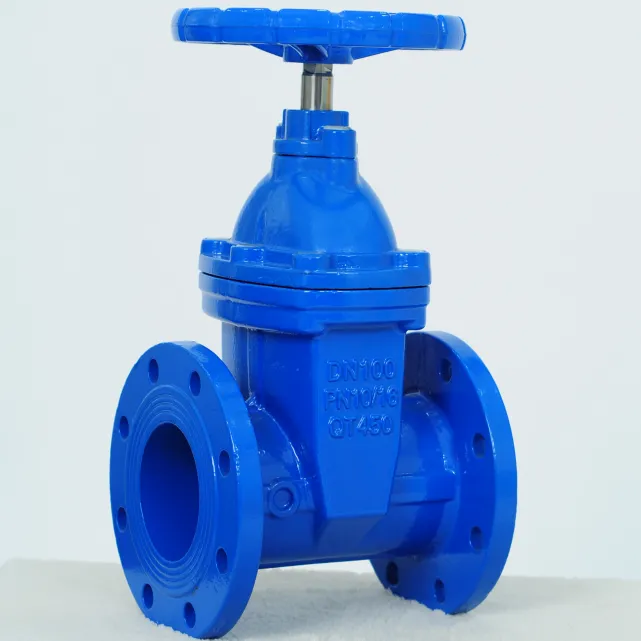ball valve gate valve globe valve
Understanding Different Types of Valves Ball Valves, Gate Valves, and Globe Valves
Valves are critical components in fluid handling and control systems, serving to manage the flow of liquids and gases in various industries, from water supply to oil and gas. Among the various types of valves, ball valves, gate valves, and globe valves are three commonly used types, each with unique constructions and functional advantages. In this article, we will explore the characteristics, applications, and benefits of these valves to provide a clearer understanding of their roles in industrial systems.
Ball Valves
Ball valves are known for their quick operation and excellent sealing properties. The primary feature of a ball valve is its spherical disc (the ball) that pivots within the valve body to control flow. When the ball is turned to align its hole with the flow direction, the valve is open; when turned perpendicular, the flow is blocked.
Advantages 1. Quick Operation Ball valves can be fully opened or closed with a 90-degree turn, making them ideal for applications that require rapid shut-off. 2. Low Pressure Drop Due to the straight-through design, ball valves offer minimal resistance to fluid flow when fully open, thus maintaining system pressure. 3. Durability Typically constructed from robust materials, ball valves can handle high-pressure and temperature conditions, contributing to their longevity.
Applications Ball valves are widely used in various sectors including water treatment, oil and gas, chemical processing, and power generation
. They are particularly valuable in systems requiring fast actuation and dependable sealing.Gate Valves
Gate valves are designed to allow or stop the flow of fluid in a pipeline. They feature a wedge-shaped gate that moves up and down to open or close the valve. Unlike ball valves, gate valves are primarily used in fully open or fully closed positions and are not suitable for throttling applications as they can lead to erosion of the gate.
ball valve gate valve globe valve

Advantages 1. Minimal Flow Resistance When fully open, gate valves allow fluid to pass without significant disruption, making them excellent for pipeline applications. 2. Space Efficiency Gate valves have a compact design that can be advantageous in applications with limited space. 3. Low Friction Loss Their design results in lower friction loss compared to other valve types, ensuring better efficiency in fluid systems.
Applications Gate valves are typically used in water supply systems, sewage treatment, and other applications where complete shut-off is necessary. They are prevalent in large pipelines and industrial plants where operational efficiency is paramount.
Globe Valves
Globe valves are recognized for their ability to regulate flow effectively. They feature a spherical body with an internal baffle that directs the flow, allowing for precise throttling. The disc inside the globe valve can be raised or lowered to control the flow rate, making this valve type ideal for applications requiring modulated flow.
Advantages 1. Flow Regulation Globe valves provide excellent control over flow rates, making them suitable for applications where precise adjustments are necessary. 2. Good Sealing Capability With a design that allows for tight closure, globe valves can effectively prevent leaks. 3. Durability Constructed from durable materials, globe valves can withstand high pressure and temperature variations.
Applications Commonly used in steam, water, and gas applications, globe valves find their place in the chemical, power generation, and petrochemical sectors, especially in systems that require regular adjustments to the flow.
Conclusion
In conclusion, ball valves, gate valves, and globe valves each play an integral role in fluid control systems. Ball valves are favored for their quick operation and low pressure drop; gate valves for their minimal flow resistance and efficiency; and globe valves for their precise flow regulation. Understanding the specific features and applications of these valves is essential for selecting the right type for a given industrial or commercial need. Ultimately, choosing the correct valve will enhance system efficiency, ensure safety, and contribute to reliable operations in various fluid handling applications.
-
3-types-of-check-valves-maintenance-tipsNewsAug.23,2025
-
ball-valves-types-with-trunnion-mounted-designNewsAug.23,2025
-
butterfly-valve-company-production-capabilitiesNewsAug.23,2025
-
fisher-globe-valve-technical-specificationsNewsAug.23,2025
-
types-of-gaskets-for-flanges-selection-guideNewsAug.23,2025
-
wedge-gate-valve-suppliers-quality-standardsNewsAug.23,2025
-
Breakthrough in Domestic Low Temperature Valve Technology in ChinaNewsAug.18,2025




